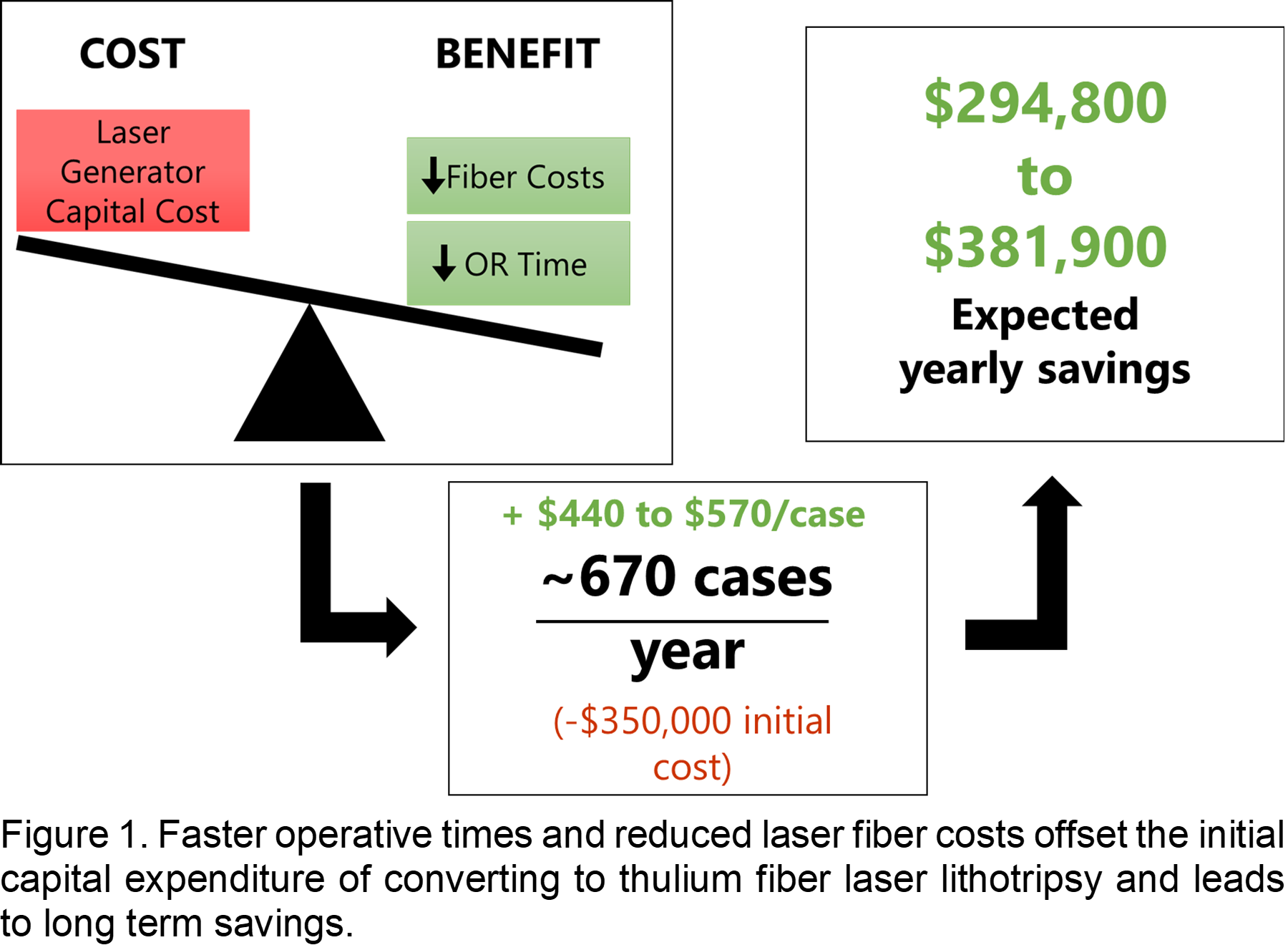Improved Efficiency of Thulium Versus Standard Holmium Ureteroscopic Laser Lithotripsy Leads to Large Cost Savings
Joshua A. Linscott, MD, PhD1, Samuel W. Nowicki, BS2, Mitchell H. Nguyen, MD1, James R. Ryan, BS2, Brian M. Jumper, MD1, Johann P. Ingimarsson, MD1.
1Maine Medical Center, Portland, ME, USA, 2Tufts University School of Medicine, Boston, MA, USA.
BACKGROUND: Nephrolithiasis prevalence approaches 10% in the United States with an almost $5 billion/year associated cost of care. As laser lithotripsy is one of the most common urologic procedures, small cost savings per case can have a large financial impact. Recently, the FDA approved thulium fiber laser (TFL) lithotripsy. This technology decreased our average ureteroscopic lithotripsy case time for comparable stones when compared to a standard 100W holmium laser (Hol:YAG). Here, we perform a cost benefit analysis to show projected cost savings at our institution.
METHODS: Capital cost for Olympus SOLTIVE™ SuperPulsed Laser system was obtained. Price of individual Hol:YAG and TFL fibers were compared. Direct and indirect operating rooms costs per min when using laser at our institution in 2020 were calculated by the financial department. TFL was not introduced until late October and therefore weighted Hol:YAG fiber cost contribution in direct cost calculations was also considered. Indirect costs were assumed to be equal for Hol:YAG and TFL lithotripsy. Average operative times for each modality were determined. Expected annual cost savings were calculated as follows: Time saved (min/case) x Direct OR cost ($/min) x Cases/year = Annual cost saving ($/year)
RESULTS: Initial capital costs for 2 SOLTIVE SuperPulsed laser systems based on list price was $350,000. Individual TFLs cost $319.50 vs $450.00 for holmium fibers. Direct operating room costs for the facility were calculated at $33.82/min, which includes a blended average of Hol:YAG and TFL fiber costs, heavily weighted to Hol:YAG. Average operation time with TFL was 13 min less than with Hol:YAG, saving $440/case. Including laser fiber cost savings not fully accounted for in the calculated direct cost/min raises estimated savings to as high as $570/case. Annually ~670 cases are performed at our institution, giving a range of $294,800 to $381,900 savings per year.
CONCLUSIONS: Switching from standard Hol:YAG to TFL lithotripsy reduced our operative time significantly, leading to large cost savings ($440/case). TFLs are $150.50 less expensive than Hol:YAG fibers. Together, yearly cost savings are estimated to be $294,000-$381,900. We conservatively expect to cover TFL capital expenditure for 2 laser systems within five fiscal quarters. 
Back to 2021 Abstracts
